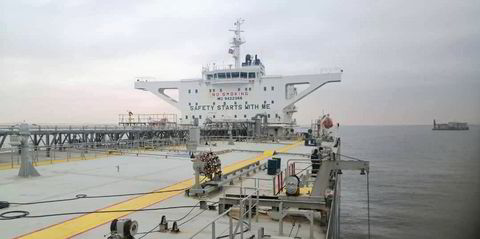Counting the frequency with which keywords appear in press articles, Google searches and Facebook entries has long been a popular tool for economists wishing to divine the mood of economic actors.
A group of maritime economists from Greece has now applied the same method to the world of shipping, using TradeWinds' articles as a raw material.
“To the best of our knowledge, there is no other research in the maritime shipping literature dealing with this challenging issue,” wrote authors Theodoros Gavriilidis, Anna Merika and Christos Sigalas of the Deree-American College of Greece, as well as maritime economics professor Andreas Merikas of GMS Hellas.
"By ... using filtered keywords that imply either a positive or a negative sentiment, we tried to fill this gap," they said.
The fruit of their work — a sentiment measure for dry bulk shipping — was presented in a paper published in Maritime Policy & Management, a respected journal for international shipping and port research.
Sigalas told TradeWinds that the same principle could be applied to tankers and containerships as well.
Multi-pronged approach
The academics first conducted surveys with industry stakeholders to identify keywords with positive and negative sentiment connotations.
In a separate survey, executives from shipping companies, banks and white-collar maritime-service providers were asked to attach an importance to the most frequently mentioned keywords, on a five-point scale from "strongly agree" to "strongly disagree".
The keywords with the highest relative value were found to be "strong", "positive" and "optimistic". On the negative side, it was "pessimism" and "negative".
Researchers then counted the frequency with which 28 such keywords appeared in 9,500 dry bulk articles published in TradeWinds between 2008 and 2018.
The sentiment measure was calculated by combining the frequency of each keyword with its relative weight, as the sum of values resulting from the 14 bearish keywords were subtracted from those of the 14 bullish ones.
The sentiment measure, which researchers called SENTI, was found to correlate highly with the Baltic Dry Index.
"This shows that the gauge is valid," Sigalas said.
Causality between sentiment figures and actual freight rates works in both directions.
However, empirical results collected by the Greek team in the 10 years to 2018 indicated that sentiment was the stronger factor — at least in the period observed.
"According to our findings, a 1% increase in dry bulk [freight] rates is associated with [a] 0.032% increase in next period’s market sentiment measure," the researchers wrote.
"However, when the market sentiment measure increases by 1%, then seaborne economic activity in the next period increases by 18.7%. It appears even though in both relationships the effect is statistically significant, the magnitude of the market sentiment’s change is much stronger."
Researchers also statistically compared their gauge with the Chinese construction index but found the latter had a "rather weak impact on both the measure of market sentiment and the proxy variable of seaborne economic activity".
The Nasdaq’s transportation index was found to have a positive influence on market sentiment but a negative one on seaborne economic activity.






